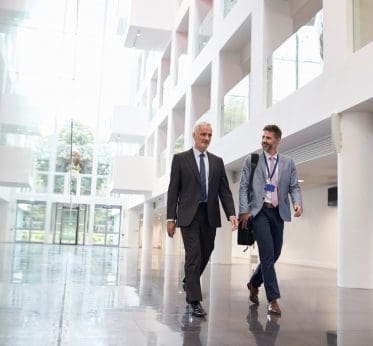Originally published by CIO
Re-engineering your culture requires developing new core skills. Learn how three CIOs are tackling IT transformation from a human perspective.
In four years as CTO at CVS, Claus Jensen sponsored no technical training for his 500-person team. None.
“That’s not to say technical training wasn’t available,” he’s quick to note. “But I didn’t sponsor any of it.”
Instead, he sponsored 45 soft skill initiatives — a dedicated, intentional program of building what we often undersell as soft skills from the ground up: consultative approaches, negotiating prowess, influence and diplomacy. Everything from marketing IT’s value within the business to providing strategic leadership.
The reason for this intense focus? As I explained in “The new core competencies IT must master,” only one of the core competencies of organizations moving up the IT maturity curve had to do with technical skills. The rest were soft skills. Those were the real differentiators.
Jensen did more than just post a curriculum for soft skills training. He participated in all the workshops himself. He created thought-provoking videos that communicated why these skills are critical to IT and the business’s overall success. And he created a badge program that recognized everyone’s achievements. If you check out his LinkedIn profile, you’ll see that he notes many of his own certifications through that program. Now imagine anyone on his team trying to say, “Ahh, this touchy-feely stuff doesn’t really matter.”
It matters. IT leaders are being asked to transform their organizations. And the answer to “But transform into what?” has everything to do with making soft skills the new core competencies. Jensen has transformed his organization by focusing on these skills.
Instilling the new core
In helping Jensen plan workshops, I saw he was not taking a shotgun approach to training. Each session was a deliberate part of a five-year plan that tackled IT transformation from a human perspective.
“I spent my first four months at CVS forming my own holistic picture of what I thought IT needed to become,” he says. “And when I unveiled a five-year plan, nobody believed it was an actual five-year plan.”
Persevering, Jensen established a series of learning steps toward an objective, and that objective was a slogan: We turn vision into action.
“My goal was to change three things: What people do, how people think, and how people influence,” Jensen says. “The first reactions I got were, ‘You’re doing it backward — you’ve got to change how people think before you can change what they do.’ But I knew that to change people, you have to first pull them out of their comfort zone.”
Steve LeMoine, CIO at semiconductor and lighting manufacturer Cree, takes a less programmatic approach, instead emphasizing individual coaching. In quarterly reviews, he’ll ask a direct report what job he or she wants to evolve into. “And my second question will be, ‘What skills do you think you need to be successful in that role?’”
The staffer may list four or five, and LeMoine might add one or two more. Then they rate the person in each skill: “Positive” means it already comes easy. “Neutral” means they’re okay, but don’t get to practice it much. And “negative” indicates a fear or aversion to that skill.
“We look at their portfolio of neutrals and negatives,” he says. “And then we’ll talk about what kind of on-the-job development can help that person close the gaps.”
Sue Kozik, CIO of Blue Cross and Blue Shield of Louisiana, also invests heavily in developing her people in support of her transformation initiatives. She sees her role as providing the opportunity and vision to allow her staffers to develop their natural curiosity. A willingness to embrace continuous learning and demonstrate curiosity about one’s company and industry, she says, is essential to high performance and to developing and demonstrating such core competencies as innovative thinking, influence and empathy.
A balance of responsibility
One challenge in planning a core skills development program is the perception that these more personal skills are the employee’s job to learn, and the business should only invest in technical skills like learning a programming language.
“You’re responsible for your future, no question,” says LeMoine. “It’s the decisions you make that get you there. I see it as 51% on the employee, 49% on leadership. The majority of the onus is on you, and you own it, but I will help you get there.”
The organization’s 49% effort also ensures that your team members want to pursue their destiny with you. In an era of intense talent scarcity, a CIO is serving the business, as well as the workforce, by creating an appealing growth environment for engaged, ambitious learners.
Sue Kozik puts a lot of the responsibility on employees: They have to bring the engagement, and she’ll bring guidance and encouragement. She communicates higher strategy discussions to her team. She provides feedback and learning opportunities. And, very importantly, the occasional “nudge.”
“Maybe I’ll go to a meeting with two or three folks on my team, and they won’t say a word,” she says. “After the meeting I’ll debrief and say, ‘Why didn’t you contribute?’ I’ll hear, ‘Well, I didn’t think I should, it wasn’t my place.’ I’ll always say, ‘Well, it won’t be your place if you don’t.’ Part of my role is nudging and encouraging people to speak up in settings where they might not be completely comfortable.”
Leading from the front
Each of these leaders is a strong proponent of the core skills, both as a way to drive better performance within their organizations, and to elevate IT within the greater business as a strategic partner and driver of innovation.
Kozik’s investment in the core skills positions her team to achieve her motto as an IT leader: “Make it easy, make it happen, and show we care.” Or, speak the same language, have an appropriate sense of urgency, and display empathy. The result is greater engagement, which leads to adoption of these new core skills. Not least because your people see what’s in it for them.
“I told this to someone today,” LeMoine says. “‘I want to make your resume the most powerful resume, so that every single company wants you to work for them, but you’re getting such great experience, growth and rewards here that you never want to leave.’”
And it’s that win-win mentality that is helping the CIOs I collaborate with provide the new levels of partnership and leadership their businesses expect.



